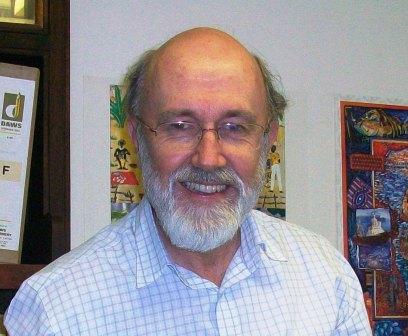
Professor Alan Whitfield, Chief Scientist at the South African Institute for Aquatic Biodiversity, recently hosted a seminar at Rhodes that looked at the last 100 years of research into estuarine life, as well as future research trends.
An estuary is a partly enclosed coastal body of water with one or more rivers and streams flowing into it, and it is also connected to the open sea. The inflow of both seawater and freshwater into the estuary provide high levels of nutrients in the water, making estuaries among the most productive natural habitats in the world.
Estuaries provide habitat for a number of plants and animals, including many kinds of fish and shellfish that live in these systems. These waters also serve as spawning and nursery grounds for populations that are harvested offshore.
Prof Whitfield studies fish populations in estuaries as indicators of what is happening within the system. Most estuaries are at risk due to human activities, both past and present.
In his presentation, he said that even in 1915 over-fishing was considered a problem already. He said that there should be a balance between fish exploitation and conservation.
By studying fish populations in estuaries, a manager can see whether it is necessary to close off an area to commercial or recreational fishing so as to restore depleted fish species.
Even though they need conservation, estuaries are very resilient systems. Fish populations within them are used to being washed out with river floods and they adapt to different environmental conditions. However, Prof Whitfield said that global warming will have a big effect on these systems as it changes sea conditions and marine connectivity.
New technology is enabling researchers to track fish movements and conditions in estuaries. Some of the new technologies researchers now use include acoustic telemetry which is used to obtain a continuous record of fish movements by attaching an acoustic tag onto the fish.
Prof Whitfield said that this technology would enable collaborative work between researchers because it can be used to track a number of different marine species.
He is an A-rated scientist in Marine Science, a world class leader as acknowledged by his peers and recently graduated with a Doctor of Science.
The seminar is part of the Department of Ichthyology and Fisheries Science/SAIAB Seminar Series and his talk was entitled “Building a research pyramid around estuarine fishes and looking into the future using new technologies.”
By Nompumezo Makinana
